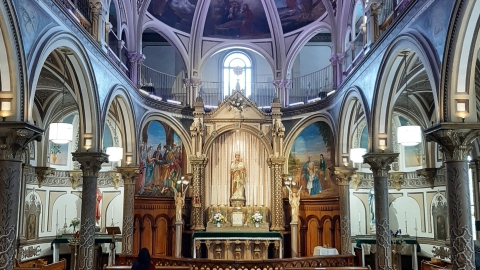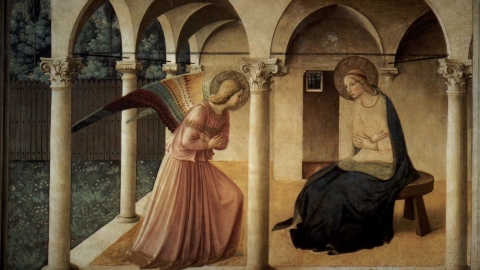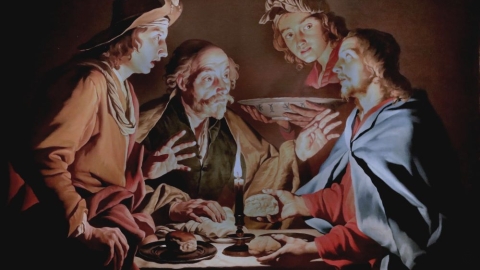France: Who’s Afraid of the Traditional Mass?

The French Bishops’ Conference (CEF) wrote a note entitled: “Summary of the results of the consultation on the application of the Motu proprio Summorum Pontificum requested by the Congregation for the Doctrine of the Faith in April 2020.” This summary is a 10-page document, globally hostile to the Tridentine Mass.
The site Paix liturgique on January 18, published it in full and notes that “the realization of this synthesis is a kind of power play. It should have been the Roman Congregation itself who analyzed the responses of the bishops and made a general synthesis.
But, both the Italian Conference and the French Conference (others too, no doubt), have decided to do this work themselves, which allows, according to the usual inclination of episcopal conferences, the development of a general line, with which a certain number of bishops will not identify, and to formulate wishes supposedly shared by all.”
Despite this unfavorable orientation, the anonymous editor of the summary cannot hide the confirmed interest of seminarians in this liturgy, which they generally have to satisfy on their own, nor the changes (considered marginal) of the ordinary form because of the presence of the extraordinary form, nor the enthusiasm of young people for the traditional liturgy.
On the whole, on reading this note, the Conference of Bishops of France is contemptuous of the participants in the traditional liturgy: the “indigent formation” of priests of the Ecclesia Dei communities [clearly, not conciliar enough], “weak missionary dynamism” [despite the average age and the growth rate of the participants],and “mediocre” sermons.
The Society of Saint Pius X, on the other hand, is superbly ignored on the pretext that it is “outside the Church.”
On Le Rouge & le Noir website of January 29, Fr. Claude Barthe completes this analysis: “If we are to believe the editor [of the note], the bishops would affirm that the extraordinary form is not missionary, which leaves one speechless when one knows that the parish masses [Paul VI] are always more deserted, while the traditional celebrations fill up and cause, especially among young people, a not insignificant number of conversions (incidentally, the synthesis recognizes this attraction that it exercises on young people, but explains it by their “fragility,” their desire for a reassuring identity. –The figures given about traditional masses are typically the “police figures” (they would gather on average between 20 and 70 people…).
On the Catholic Renaissance site, Jean-Pierre Maugendre stresses this alleged “weak missionary dimension” of the traditional Mass: “to listen to a French bishop, whose duties have been more or less solidly that of a pastoral ministry and who, in the space of two generations, has seen Sunday practice drop from 25% to less than 1.8% of the population, give lessons in missionary spirit is, to say the least, disconcerting.”
He adds aptly: “From a doctrinal point of view, some statements are surprising. Mention is made several times, with or without quotation marks, of the “conciliar Church” or “conciliar teaching.” The expression, used in June 1976 in a letter from Msgr. Giovanni Benelli, deputy of the Secretariat of State, to Archbishop Lefebvre, had aroused the indignation of the founder of the Society of Saint Pius X who, for his part, wished only to belong to the Catholic Church.”
In fine or in cauda, the episcopal note gives Rome two pieces of advice: 1.) be vigilant not to extend the extraordinary form; 2.) pressure priests and faithful of the extraordinary form into bi-formalism—sometimes extraordinary, sometimes ordinary. By adding that “the bishops have very greatly returned [in their responses] to the exclusivity of the [traditional] celebration, the use of the lectionary, of the same liturgical (sanctoral) calendar, and adherence to the current magisterium.”
As the Paix liturgique of February 1 underlines: “In the long term, there could well be pressure on the [former] Ecclesia Dei institutes in favor of bi-formalism, if they were placed, as it should happen, under the jurisdiction of the Congregation for Religious and no longer under that of the Congregation for the Doctrine of the Faith.”
Fr. Barthe - on Le Rouge & le Noir, already quoted - wonders: “the Conference of Bishops of France...would like Rome to reduce the scope of the traditional liturgy. But does the bloodless Church of France, which has fewer and fewer faithful, priests, and funds, have the capacity to go back to war, as in the years following the Council?”
As reported by the FSSPX.News on January 27: “there is a point on which we can only agree, this is the last sentence of the document: ‘The application of this motu proprio ultimately raises ecclesiological questions rather than liturgical ones.’ This is the whole question: a new ecclesiology, new rites, new theology, new catechism, new canon law, and finally a new ‘conciliar’ Church which is still dying before our eyes.”
(Sources : Paix liturgique/R&N/RC/DICI n°405 – FSSPX.Actualités)
Illustration : Lumen roma, CC BY 3.0, via Wikimedia Commons



